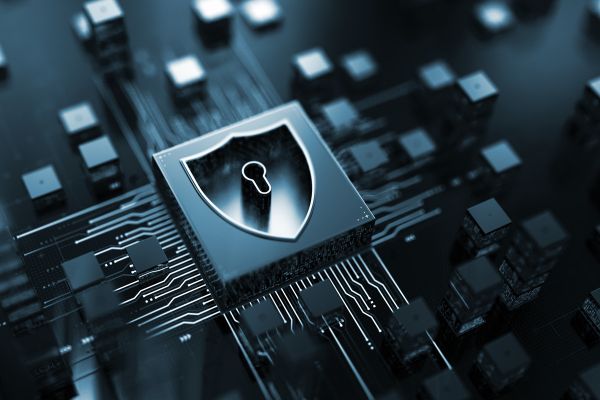In today’s hyper-connected world, organizations face an ever-evolving landscape of cyber threats. From sophisticated ransomware attacks to insider threats and phishing scams, the need for robust enterprise cybersecurity best practices has never been more critical. As businesses become increasingly reliant on digital infrastructure, protecting sensitive data and ensuring the integrity of IT systems is essential for maintaining trust and operational continuity.
Understanding the Importance of Enterprise Cybersecurity
Enterprise cybersecurity extends far beyond traditional antivirus solutions and firewalls. It encompasses a comprehensive framework designed to safeguard networks, devices, and data from unauthorized access and potential breaches. The consequences of inadequate cybersecurity can be catastrophic, including financial loss, reputational damage, and regulatory penalties. Therefore, implementing enterprise cybersecurity best practices is not just a technical requirement but a strategic imperative for organizations of all sizes.
Building a Strong Security Culture Across the Organization
One of the foundational pillars of effective enterprise cybersecurity lies in cultivating a strong security culture among employees. Human error remains one of the leading causes of data breaches. Therefore, organizations must invest in regular security awareness training, equipping employees with the knowledge to recognize phishing emails, social engineering tactics, and unsafe online behavior. A security-conscious workforce acts as the first line of defense, significantly reducing the likelihood of successful attacks.
Implementing a Multi-Layered Security Approach
A multi-layered security strategy, also known as defense in depth, is essential for addressing the complex nature of modern cyber threats. This approach involves integrating various security measures at different levels of the IT infrastructure, ensuring that even if one layer is compromised, others remain intact. By combining endpoint protection, network security, application security, and data encryption, organizations create a resilient defense system that can withstand diverse attack vectors.
Regularly Updating and Patching Systems
Cybercriminals often exploit vulnerabilities in outdated software and operating systems to gain unauthorized access. Regularly updating and patching systems is one of the most critical enterprise cybersecurity best practices. IT teams must establish a proactive patch management process to identify and remediate vulnerabilities promptly. Automated tools can assist in monitoring systems for necessary updates, reducing the window of opportunity for potential attackers.
Leveraging Advanced Threat Detection Technologies
Traditional security tools are no longer sufficient to combat sophisticated cyber threats. Enterprises should adopt advanced threat detection solutions such as intrusion detection systems (IDS), security information and event management (SIEM) platforms, and artificial intelligence-powered analytics. These technologies enable organizations to detect anomalies, analyze patterns, and respond to incidents in real time, minimizing the impact of potential breaches.
Strengthening Access Controls and Identity Management
Unauthorized access remains a significant risk for enterprises. To address this, organizations must implement robust access control measures and identity management protocols. Role-based access control (RBAC), multi-factor authentication (MFA), and strict password policies are essential components of this strategy. By limiting user access to only the resources necessary for their roles, enterprises can significantly reduce the potential for insider threats and unauthorized data exposure.
Developing a Comprehensive Incident Response Plan
Despite best efforts, no organization is immune to cyber incidents. Having a well-defined incident response plan is critical to minimize downtime and mitigate damage in the event of a breach. This plan should outline roles and responsibilities, communication protocols, and step-by-step procedures for containing, eradicating, and recovering from attacks. Regular testing and updating of the incident response plan ensure it remains effective in addressing emerging threats.
Ensuring Compliance with Regulatory Standards
Enterprises operating in various industries are subject to stringent cybersecurity regulations and standards. From GDPR and HIPAA to ISO 27001, compliance is not optional but a legal obligation. Incorporating enterprise cybersecurity best practices aligned with these frameworks not only ensures legal compliance but also demonstrates a commitment to protecting customer data and upholding ethical business practices.
The Role of Continuous Monitoring and Assessment
Cybersecurity is not a one-time effort but an ongoing process. Continuous monitoring and regular risk assessments are vital to maintaining a strong security posture. Organizations should regularly evaluate their security infrastructure, identify potential gaps, and adapt to evolving threat landscapes. Penetration testing and vulnerability assessments provide valuable insights into areas of weakness that require immediate attention.
Fostering Collaboration Between IT and Business Leaders
Effective enterprise cybersecurity requires collaboration between IT teams and business leadership. Cybersecurity should be viewed as a strategic business priority rather than a technical afterthought. When executives understand the importance of security investments and support initiatives from the top down, organizations are better positioned to allocate resources effectively and implement best practices across all levels.
Conclusion: Building Resilient Enterprises Through Cybersecurity Excellence
The dynamic nature of cyber threats demands that enterprises take a proactive and comprehensive approach to security. By integrating enterprise cybersecurity best practices into their operational fabric, organizations can protect critical assets, ensure regulatory compliance, and maintain stakeholder trust. In a digital era where cyberattacks are inevitable, resilience becomes the defining factor for success. Enterprises that prioritize cybersecurity as a core component of their strategy are not only safeguarding their present but also fortifying their future against an increasingly hostile cyber landscape.

